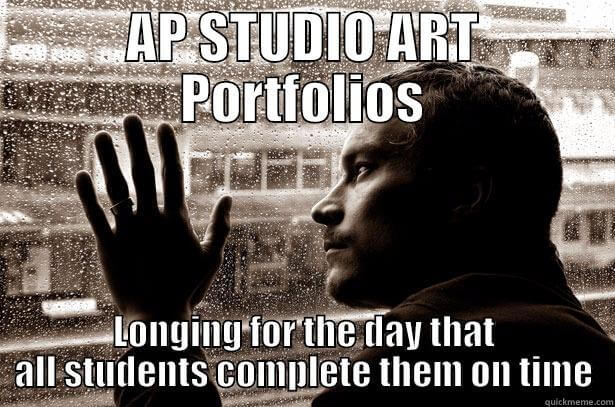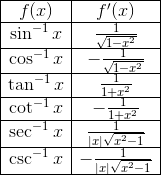Back in my teaching days, the high school where I taught was really small, like 150 students small. Though at best 1/10th the size of the other public high schools in the county, my school had an award-winning art program. Our art teacher was an accomplished artist in her own right, and she brought that passion to every lesson. Her students produced amazing work. Every semester a student’s art was on display in a local museum, or another student won a substantial scholarship in an art contest.
But here’s the thing, something you might not have suspected. My school didn’t offer AP Studio Art. Why do I bring this up, especially in an article about AP Studio Art? Well, I want to let all the artists reading this know that even if your school doesn’t offer AP Studio Art, there’s no reason to fret. Great art programs come in all shapes and sizes. 😉
But if your school does offer AP Studio Art Drawing, AP Studio Art 2D Design, and/or AP Studio Art 3D Design, you are likely wondering which course is best for you. Never fear, Mr. B is here to help you make an educated choice based on your artistic strengths and interests.
Before we talk about the individual courses, there’s something important that applies to all three. No matter which AP Studio Art course you take, the portfolio you create throughout the year is the basis for your AP score. That’s right; there’s no exam. Your portfolio items fall under three broad categories: Quality, Concentration, and Breadth. Here are the basic questions AP Studio Art graders ask themselves when reviewing art from each category:
Quality: Is the student’s artwork actually ‘good’?
Concentration: How does the student explore a single idea or subject through multiple pieces of his or her art?
Breadth: Can the student apply different artistic skills when creating art?

If you get to the end of this article and want to learn more about AP Studio Art, check out the official College Board websites for AP Studio Art Drawing, AP Studio Art 2D Design, or AP Studio Art 3D Design.
AP Studio Art Drawing
Okay, let’s take a look at what principles of design are important in AP Studio Art Drawing.
- Line quality
- Light and shade
- Rendering of form
- Composition
- Surface manipulation
- Illusion of depth
- Mark-making
Quality
So that AP graders can judge your Quality, you must submit five pieces in one or more media. These are actual pieces you create throughout the year, not photographs or scans. Each piece should be smaller than 18” x 24” to fit in the provided mailing envelope. Pieces smaller than 8” x 10” must be mounted before mailing.
Concentration
To judge your Concentration, AP graders want to see 12 works on a “specific visual idea.” In creating the concentration section of your portfolio, you are encouraged to choose your own subject. AP suggests that you also include images that influenced your work. This gives graders a clearer view of your thought process.
Unlike your Quality pieces, the 12 Concentration pieces must be high-quality digital scans or photographs of your art. When you submit the scans/photographs online, you are asked to answer two questions about your concentration. These responses are not scored, but they give graders crucial information about your artistic intent.
Breadth
AP graders want to know just how far your drawing skills go. For these 12 works, you are encouraged to experiment with your technique and subject matter. These 12 works must be original, and not submitted as part of any other category.
AP Studio Art 2D Design
Besides drawing, Studio Art 2D Design goes a step further by including graphic design, photography, collage, weaving, painting, and digital imaging, among other artistic disciplines. In this course, you are asked to work with the following principles of design:
- Unity/variety
- Balance
- Contrast
- Emphasis
- Rhythm
- Proportion/scale
- Figure/ground relationships
The requirements for the portfolio are identical to those for AP Studio Art Drawing.

AP Studio Art 3D Design
If you’re into sculpture, AP Studio Art 3D Design is the course for you. In this course you are asked to work in the following principles of design:
- Unity/variety
- Balance
- Emphasis
- Rhythm
- Contrast
- Repetition
- Proportion/scale
- Occupied/unoccupied space
The requirements for the portfolio are a bit different than for the other AP Studio Art courses.
Quality
For Quality, you submit a total of 10 images of five pieces. By having two images of each piece, AP graders can see each sculpture from two different angles.
Concentration
A total of 12 images are required, but some of these images can come from the same piece. This flexibility gives you the chance to show off either a different angle or a piece or the intricate detail of another.
Breadth
You are required to submit 16 photographs of eight three-dimensional pieces. The pieces you submit to this category cannot be used in other parts of your portfolio.
Grading the Portfolio
Any artist knows that evaluating art is subjective. One man’s masterpiece is another man’s doorstop. No matter which AP Studio Art course you take, it’s natural to feel apprehensive at the thought of a stranger grading (and judging) your artwork. Well, I’ve done the research, and I’m here to tell you how the grading process works.
AP Studio Art graders, known officially as ‘readers,’ are either AP Studio Art teachers or college professors. Everyone who becomes a reader has to go through a training program. Training involves practice grading previous years’ portfolios. A Chief Reader makes the final determination on whether a new reader is skilled enough to grade your portfolio.
The Quality section of your portfolio is graded by three readers who do not know they are evaluating the same student. Two readers evaluate the Concentration and Breadth sections of your portfolio. If the readers should award you scores that are very far apart, two more readers review your work and come to a resolution. Your final 1-5 score is an average of all the scores awarded by readers.
Final Thoughts
Like all AP exams, the College Board releases the scores for AP Studio Art in early July. If you should earn a 4 or 5, congrats. You will be able to jump into a second-semester art course during your freshmen year of college.
If a 3 or less is in your future, don’t fret. Vincent van Gogh was one of the greatest painters who ever lived. Yet he went to his grave believing that he was a failure. Remember that art (and beauty) is in the eye of the beholder. No matter what the AP score says, don’t give up on your art of yourself.
Till next time, Magooshers.





